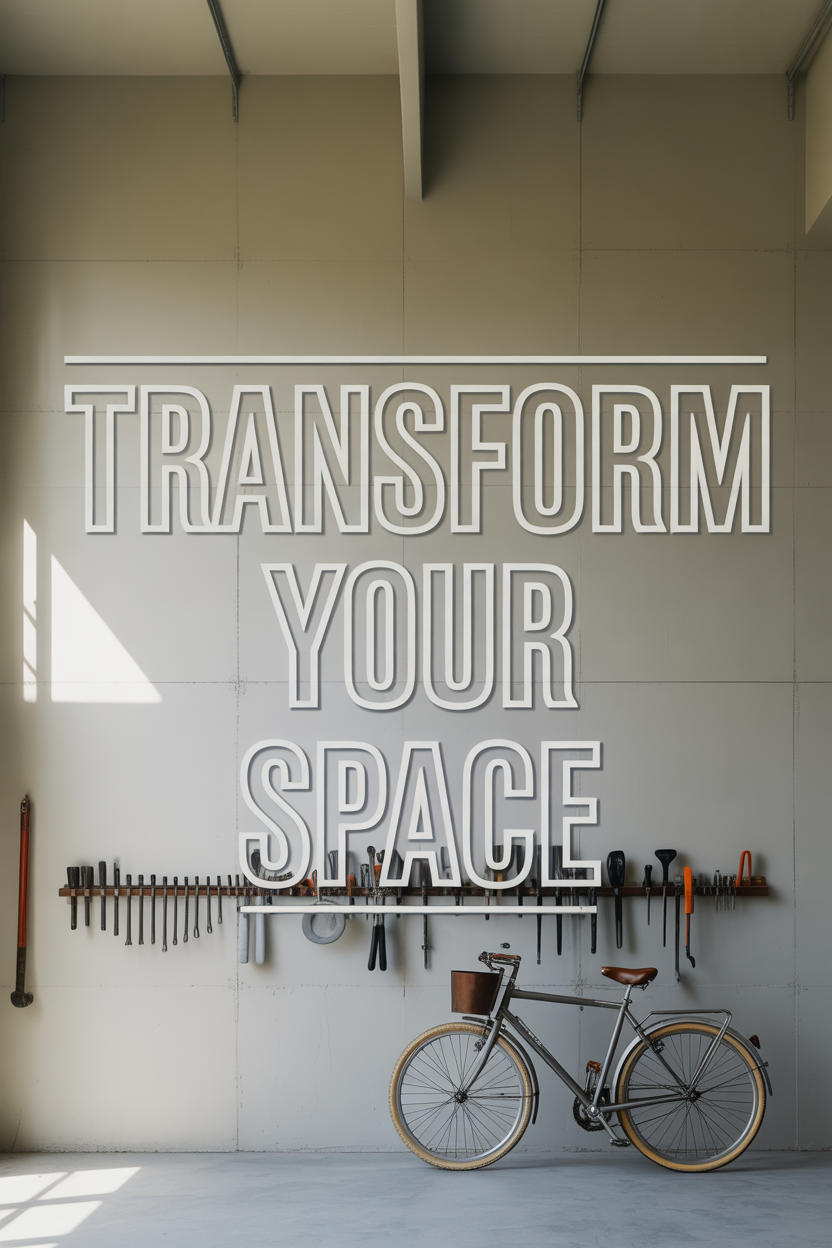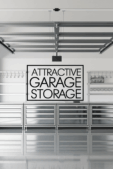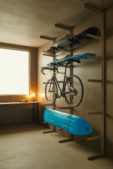Best Garage Cabinets
Best Freestanding Garage Cabinets
The Great Garage Debate: Cabinets vs. Shelving

When you finally decide to organize your garage, one of the first questions you’ll face is whether to install shelves or cabinets. There are strong arguments on both sides, and the right choice depends entirely on your specific needs. While this guide focuses on cabinets, it’s important to understand the role of both.
Shelving provides open, accessible storage, while cabinets offer a concealed, secure, and tidy solution. Many of the best garage makeovers use a smart combination of both systems. This allows you to store bulky items on shelves and secure valuable or messy items behind closed doors.
Understanding the strengths and weaknesses of each will help you create a storage plan that is functional, efficient, and perfectly suited to your space. Let’s explore the key differences to help you make an informed decision.
Ultimately, your goal is to reclaim your garage floor and create a more usable area. Whether that’s for parking your truck, working on a classic car, or setting up a new hobby space, the right storage is the first critical step.
Should I Just Use Shelves Instead?

While this is a garage cabinet guide, we can’t ignore the significant benefits of high-quality shelving. For many situations, shelving is not just an alternative but the better choice for certain items.
Good quality wall-mounted shelving, like systems from Rhino or Gladiator, can support an incredible amount of weight. You can easily store large bins, stack boxes, and even hang items like bikes or ladders from the underside of the units.
The main advantage of shelves is their flexibility. You are not confined by the four walls of a box, meaning oversized and unusually shaped items can find a home. This open-format storage is perfect for things you need to see at a glance.
Getting everything up off the floor is a major victory in any garage organization project. Shelves excel at this, making your space feel larger and simplifying cleaning tasks immensely.
The Strong Case for Garage Cabinets

Despite the flexibility of shelves, they have drawbacks that cabinets neatly solve. Open shelves can quickly look cluttered and become magnets for dust and garage grime, requiring constant tidying to maintain order.
This is where cabinets truly shine, offering a clean, uniform look that makes your garage feel more like a finished room. As automotive and storage experts highlight, simply closing the doors conceals the clutter, giving you a tidy space without constant effort.
Security is another major advantage. Dangerous chemicals, fluids, and sharp tools should be kept safely away from children and pets. A locking cabinet is the responsible and correct solution for storing these items.
Cabinets also keep prying eyes away from valuable tools and classic car parts. For organizing smaller items that can tip or leak, like spray paint cans and bottles of oil, the enclosed nature of a cabinet is far better than a bin on an open shelf.
Beyond security, cabinets protect sensitive tools and equipment from the dust and debris that inevitably coat every surface in a working garage. This protection extends the life of your gear and keeps it ready for use.
Measure Twice, Buy Once: How to Plan Your Cabinet Layout
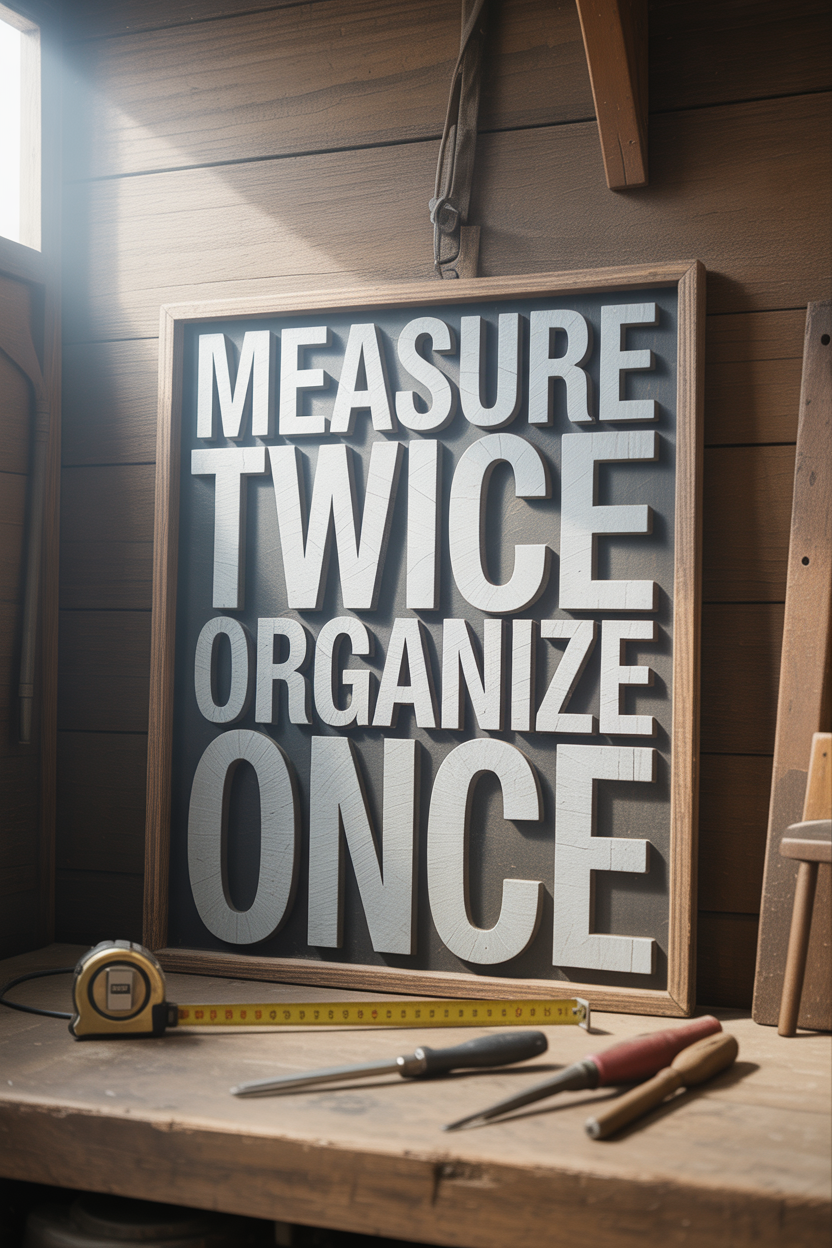
Before you get swept away by visions of a perfectly organized garage, you must start with the most critical step: planning. A tape measure and a clear plan are your best tools for avoiding costly mistakes and frustration down the line.
Start by setting a realistic budget. The price, quality, and appearance of cabinetry can vary dramatically. Knowing your budget helps you decide where to compromise—looks, materials, or long-term durability.
Next, carefully measure your available garage space. Pay close attention to things in the way, like garage door tracks, access panels, windows, and light switches. You don’t want to install a beautiful bank of cabinets only to find you can no longer open a door properly.
Don’t forget to account for your vehicle. Open your car doors fully to ensure you have enough clearance to get in and out without dinging your door on a new cabinet. This simple check can save you from a daily annoyance.
Finally, think about what you’ll be storing. Measure your largest and tallest items to ensure they will fit inside the cabinets you choose. Remember to consider the usable internal dimensions, not just the exterior measurements listed by the manufacturer.
How to Match Cabinets to Your Garage and Goals
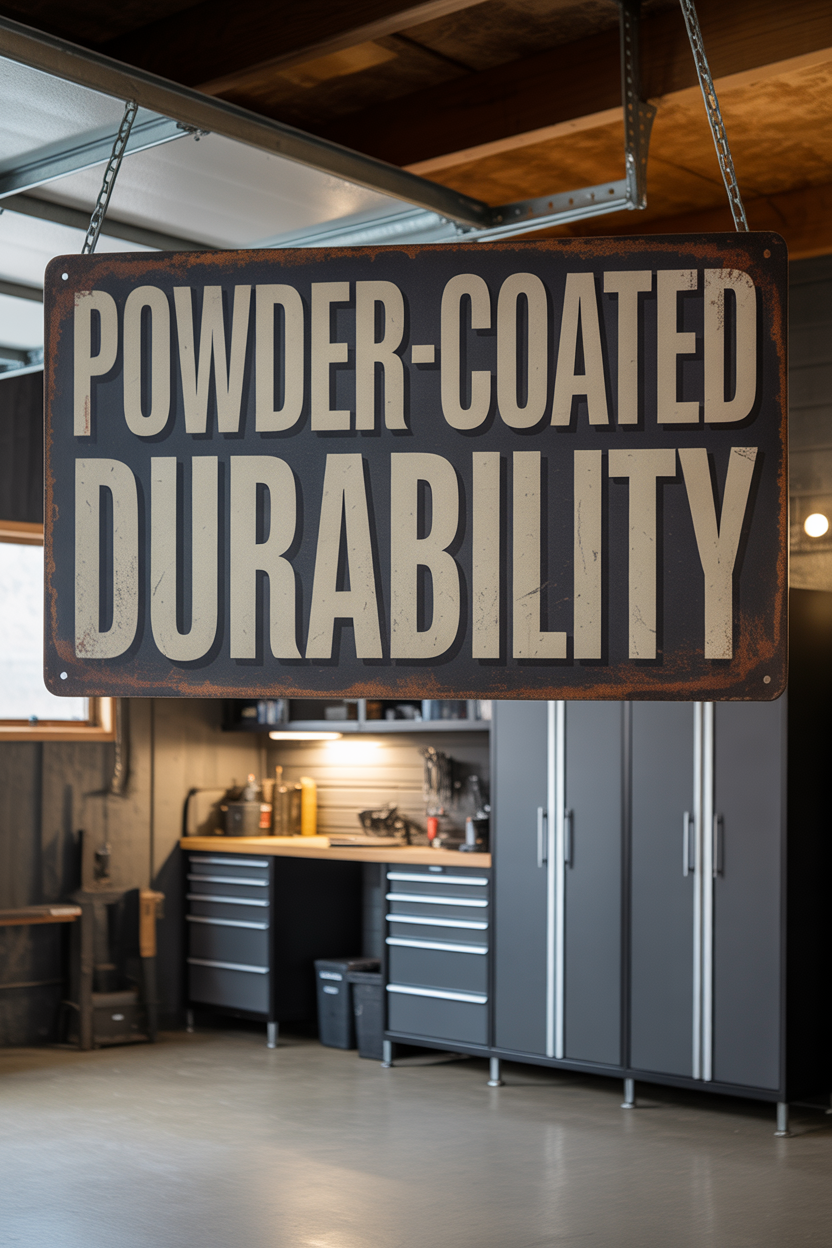
Not all cabinets are created equal, and the right choice for your garage depends on your local climate and how you plan to use them. Make sure the materials you select can withstand your garage’s environment. Extreme temperatures, wide temperature swings, and high humidity can destroy cheaper materials like particleboard.
Look for materials specifically designed for these conditions. As major manufacturers like NewAge Products recommend, powder-coated steel and high-density plastics are built to handle the harsh garage climate without degrading.
Consider the weight of your items. Check the manufacturer’s load capacity for the shelves inside the cabinets. Cheaper units use thin shelves that will quickly buckle under the weight of heavy tools or cans of paint.
What are your security needs? If you’re storing hazardous chemicals or expensive tools, lockable cabinets are essential. For specific needs like storing flammable or corrosive materials, specialty fireproof or corrosion-resistant cabinets are also available.
Finally, define your primary goal. Are you simply adding storage, or are you creating a dedicated workspace or hobby area? If you plan to build a workshop, investing in a modular system with workbench options can provide a cohesive and highly functional space you can build out over time.
Steel, Wood, or Plastic: Which Cabinet Material Is Best?
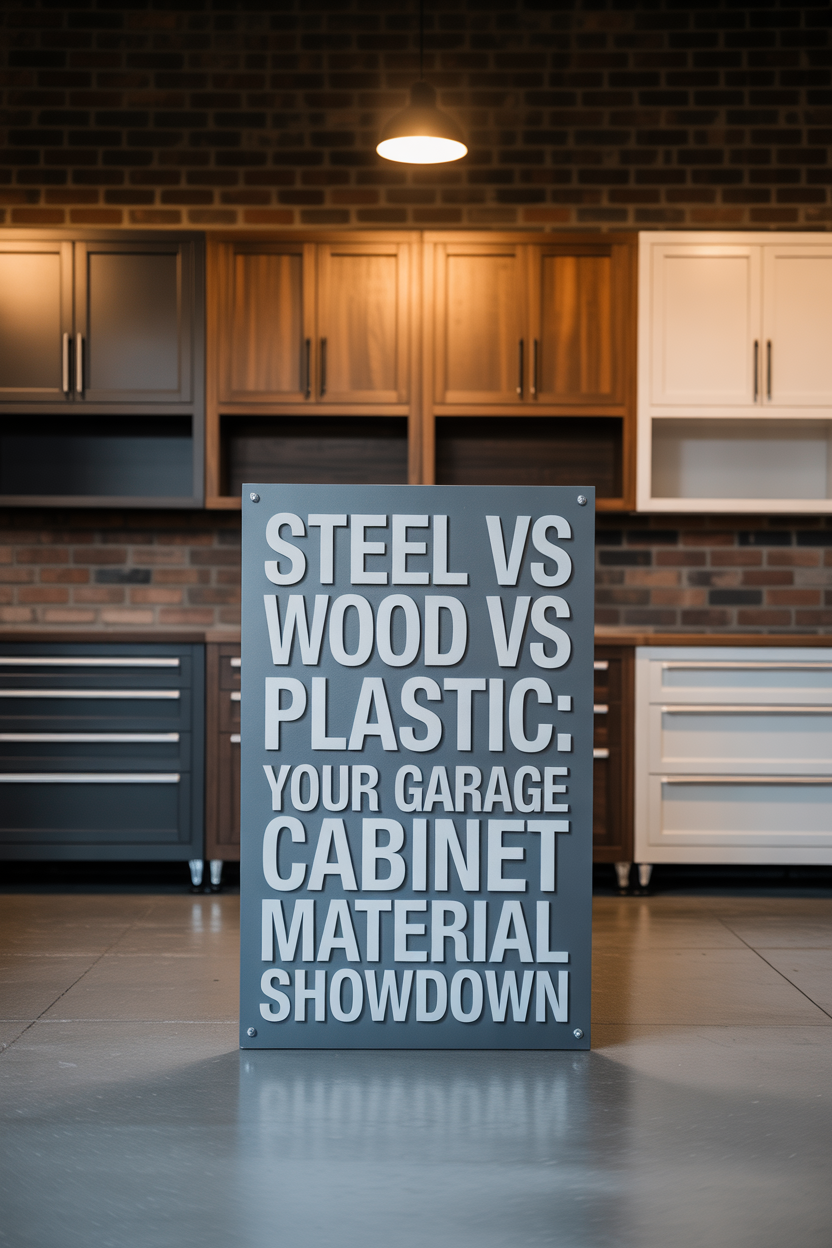
The material of your cabinets determines their strength, durability, weight, and resistance to the garage environment. The four main options are steel, wood, composites, and plastic, each with distinct pros and cons.
Steel is a popular choice for its strength and durability. High-quality steel cabinets are powder-coated to prevent rust and corrosion, while cheaper options may use thinner-gauge steel and be more prone to rust. Gauge thickness is a key indicator of quality and fire resistance.
Wood, meaning solid wood or plywood, is often used by DIYers. It’s strong, easy to find, and simple to work with, but it’s also heavy and must be painted or sealed to protect it from moisture, rot, and warping. As material guides explain, it can also absorb oils and flammable liquids, making it a fire risk.
Composite materials like MDF (medium-density fiberboard) and particleboard are common in ready-to-assemble (RTA) cabinets. While budget-friendly, their quality varies wildly. They are heavy and extremely susceptible to moisture damage, which causes them to swell and fall apart.
Modern plastics, specifically HDPE (High-Density Polyethylene), are an excellent option. Once considered cheap, advanced HDPE is now incredibly strong, lightweight, and non-reactive to most common garage chemicals. Performance tests show HDPE cabinets offer a durable, low-maintenance, and rustproof solution.
Wall-Mounted, Freestanding, or Mobile?
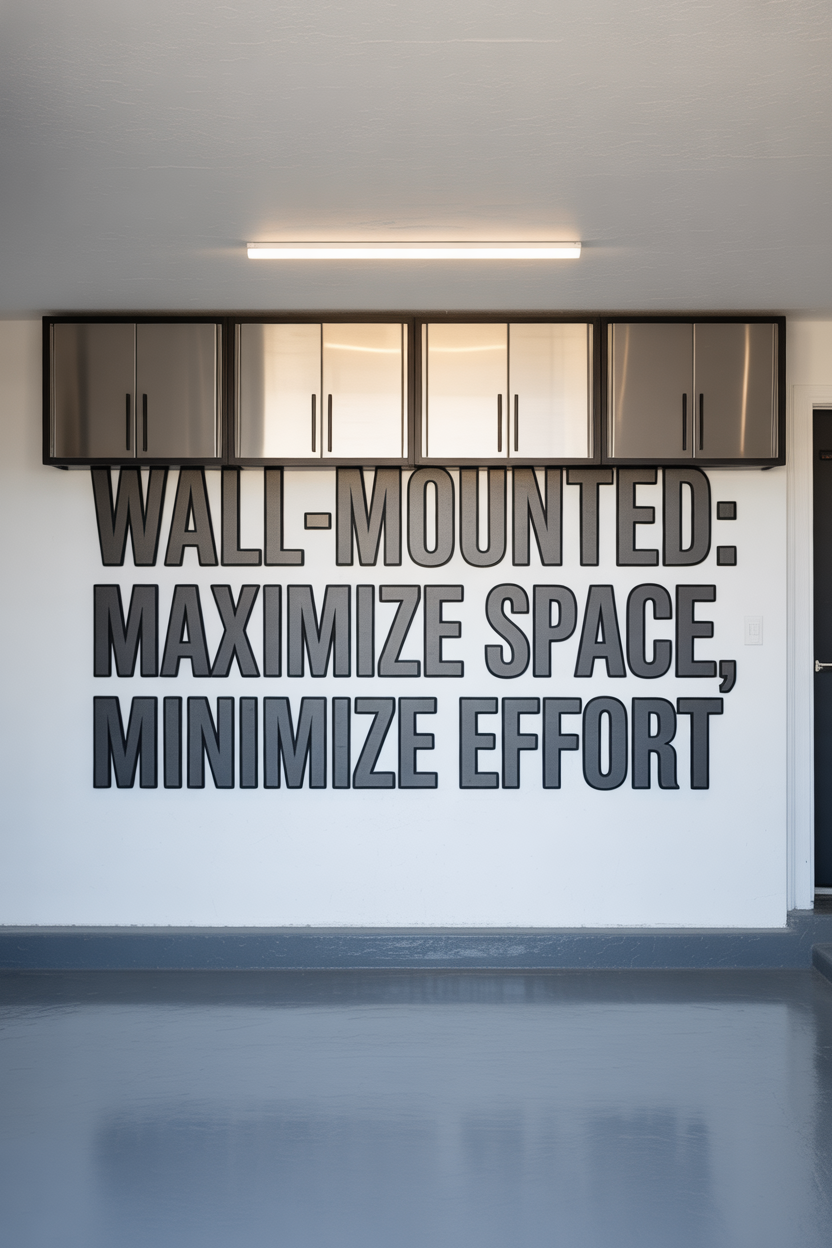
Garage cabinets generally come in three main configurations: wall-mounted, freestanding, and mobile. Wall-mounted units are a favorite because they lift everything off the ground. This frees up valuable floor space and makes it much easier to sweep or hose out the garage.
Hanging cabinets at eye level also makes them easier to use, reducing the need to bend down to access your tools and supplies. The main downside is that they require secure installation and aren’t easily moved once in place.
Freestanding cabinets, often called lockers, sit directly on the floor. Their main advantage is movability and the capacity to store taller items vertically. However, they take up precious floor space, make cleaning more difficult, and can become wobbly if not anchored to the wall, which eliminates their mobility.
Mobile cabinets on wheels, such as rolling tool chests, offer incredible convenience. They allow you to bring your entire toolset directly to your project, whether you’re working on your truck or a workbench.
This fantastic mobility depends entirely on the quality of the wheels. As product tests repeatedly show, low-quality casters are a known weak point and will fail under heavy loads or on anything but a perfectly smooth floor.
Should I Buy a Cabinet System or Individual Pieces?
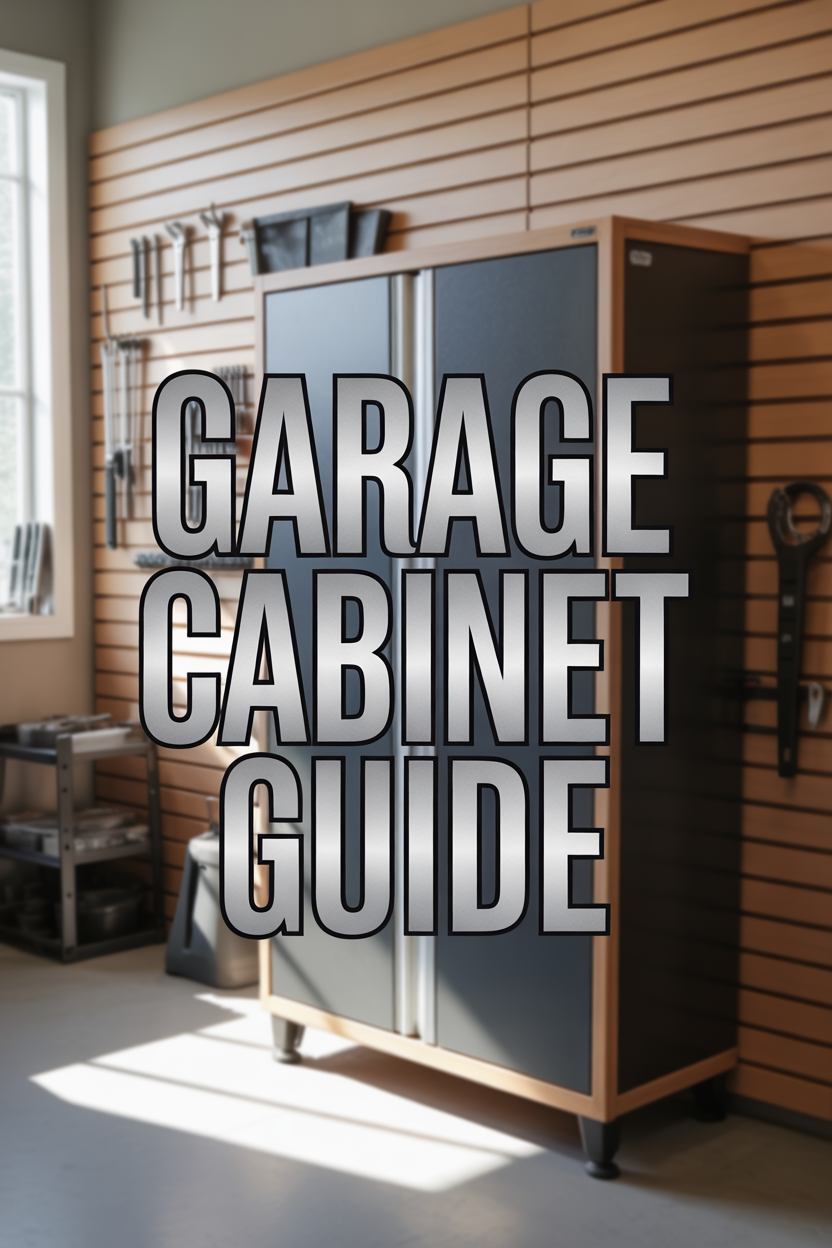
You can approach your cabinet installation by buying individual pieces or investing in a complete garage storage system. Systems from brands like Proslat, Gladiator, and New Age offer a matching look and are designed to work together seamlessly.
The main benefit of a system is the integrated mounting, often using slatwall panels or rails. This lets you place cabinets exactly where you want them, rather than being limited by stud locations. The downside is that these systems are often proprietary, locking you into one brand’s ecosystem of hooks and accessories.
You may only need one or two cabinets to go with existing shelving, such as a locking cabinet for chemicals. In this case, a standalone purchase makes more sense than investing in a whole system.
Be wary of overly specific specialty items. A cabinet with dozens of tiny drawers seems smart for organizing screws, but unless you’re a dedicated craftsperson, you’re better off using a few simple jars for your random hardware. “Know what you need” is the best advice here.
Finally, custom cabinets are a wonderful option for those with a clear vision and a larger budget. Building your own or hiring a cabinet maker allows you to get exactly what you want, perfectly tailored to your space and needs.
How to Safely Install DIY Cabinets
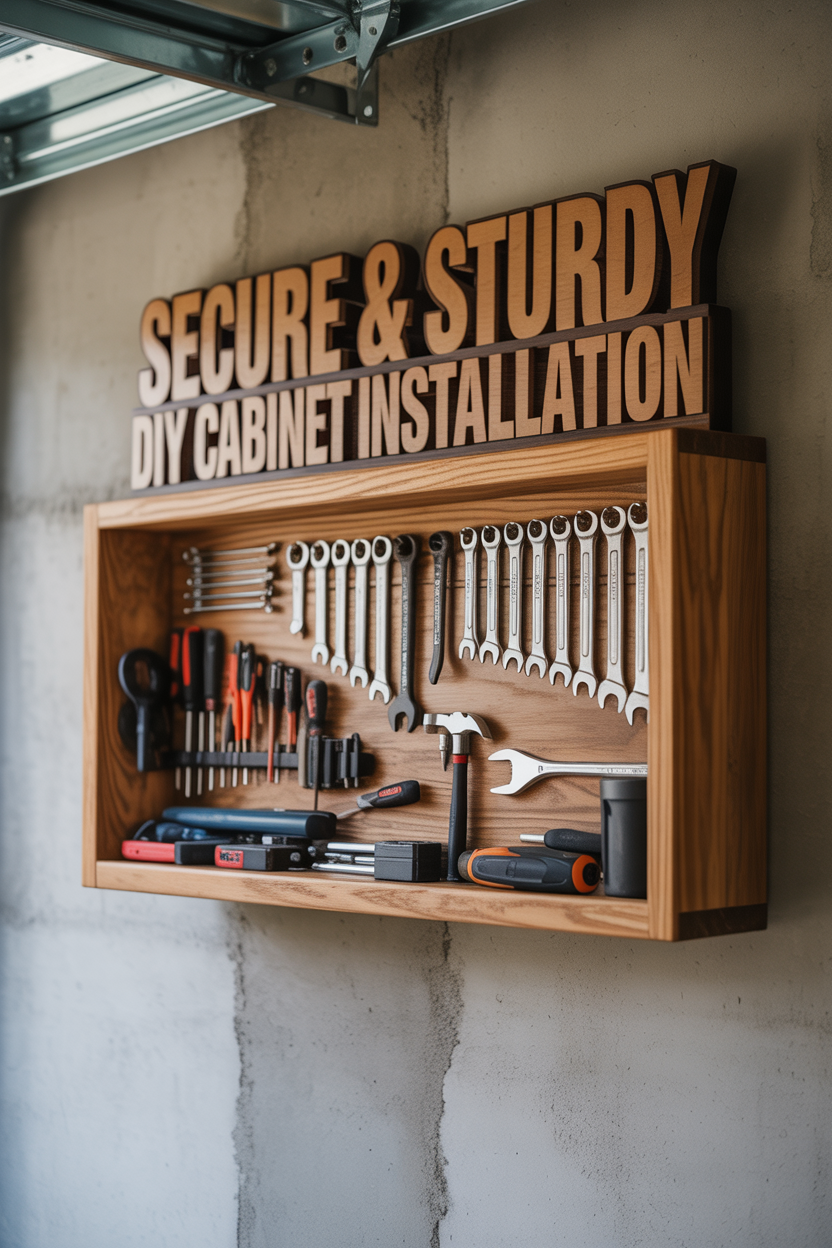
If you’re installing wall-mounted cabinets, proper anchoring isn’t just a suggestion—it’s essential for safety. A cabinet loaded with heavy tools can cause serious injury or damage if it falls off the wall.
Your cabinets must be securely anchored into the wall studs or, on a concrete wall, with appropriate masonry anchors. Never attempt to hang a heavy cabinet from drywall alone. This is an absolute recipe for disaster.
If using a wall system, follow the manufacturer’s instructions exactly. If mounting cabinets directly, you’ll need to locate the studs. In most garages, you can see the slight indentations from drywall screws, but if not, tap along the wall and listen for the solid sound of a stud versus the hollow sound between them.
Studs are typically spaced 16 inches apart from center to center. A simple stud finder can eliminate any guesswork. If the stud locations are inconvenient, you can create your own mounting rail by securely fastening a piece of lumber across the studs, then mounting your cabinet to the rail.
Be cautious if you have metal studs, as they are not as strong as wood. Their capacity to support heavy loads is limited, and anchors can pull out over time.
Can I Use Old Kitchen Cabinets in the Garage?

As you plan your project, you might be tempted to recycle old kitchen cabinets. Whether they’re from your own remodel or a friend’s, the idea of saving money and reducing waste is appealing.
However, there are significant downsides to consider.Kitchen cabinets are designed for a stable, climate-controlled indoor environment.
The garage is a much harsher world. It has extreme temperature swings, humidity, dust, and fumes. These conditions can cause the particleboard and laminate common in kitchen cabinets to warp, peel, and quickly fall apart.
Furthermore, kitchen cabinets are not built to hold the same amount of weight as purpose-built garage cabinets. Their construction can fail under the load of heavy automotive parts, tools, or bags of soil, creating a safety hazard.
They are also often heavier than their garage counterparts, putting additional and unnecessary stress on your walls. Before going this route, honestly assess if they can handle the demands of a garage environment.
How to Spot Quality in Garage Cabinets
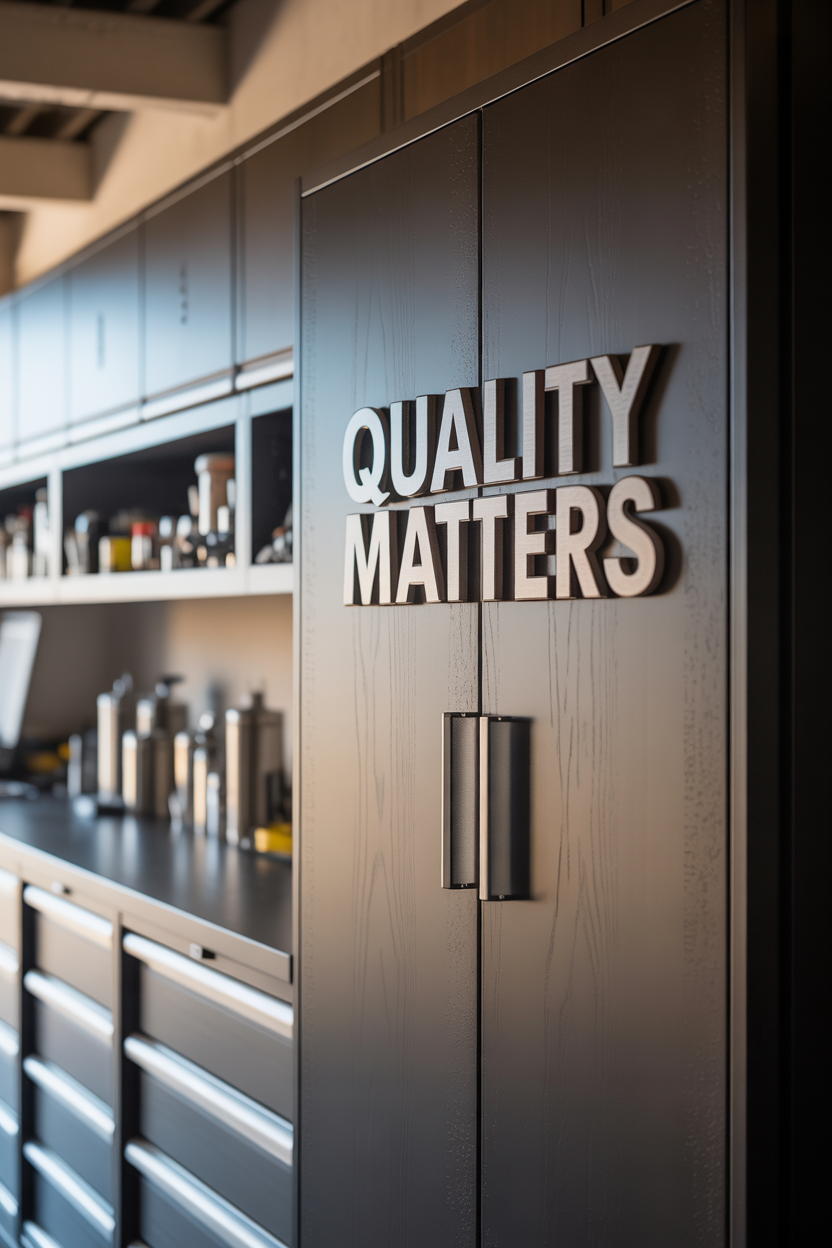
When shopping, the first question to ask is how much quality you truly need for your specific goals. You don’t need to buy the most expensive cabinet on the market, but you do want to avoid overpaying for a cheaply made product.
To find quality, you need to examine the materials and construction closely. As a general rule, pre-assembled cabinets are better than ready-to-assemble (RTA) units. As manufacturers note, pre-assembled cabinets are often welded, which is much stronger than bolt-together construction.
If you can, inspect cabinets in person. Look at the thickness of the steel or plastic. Check the finish—is it a durable powder coat, or a thin layer of paint that will easily scratch? Does the laminate on a composite cabinet look like it will peel at the first sign of humidity?
For RTA cabinets, stability comes from how the pieces interlock, not just the screws holding them together. In wood, look for quality joinery like dovetail joints, which are far stronger than simple butted joints where two pieces are just screwed together.
Shake the cabinet gently. Is there enough bracing in the corners and across the back to keep it sturdy and prevent wobbling? Look for reinforcement, as this is a key sign of thoughtful design.
Finally, always check the return policy before you buy. Understand if there are restocking fees and if you can return the product for a full refund if you open the box and are not satisfied with the quality.
Your New Garage Awaits
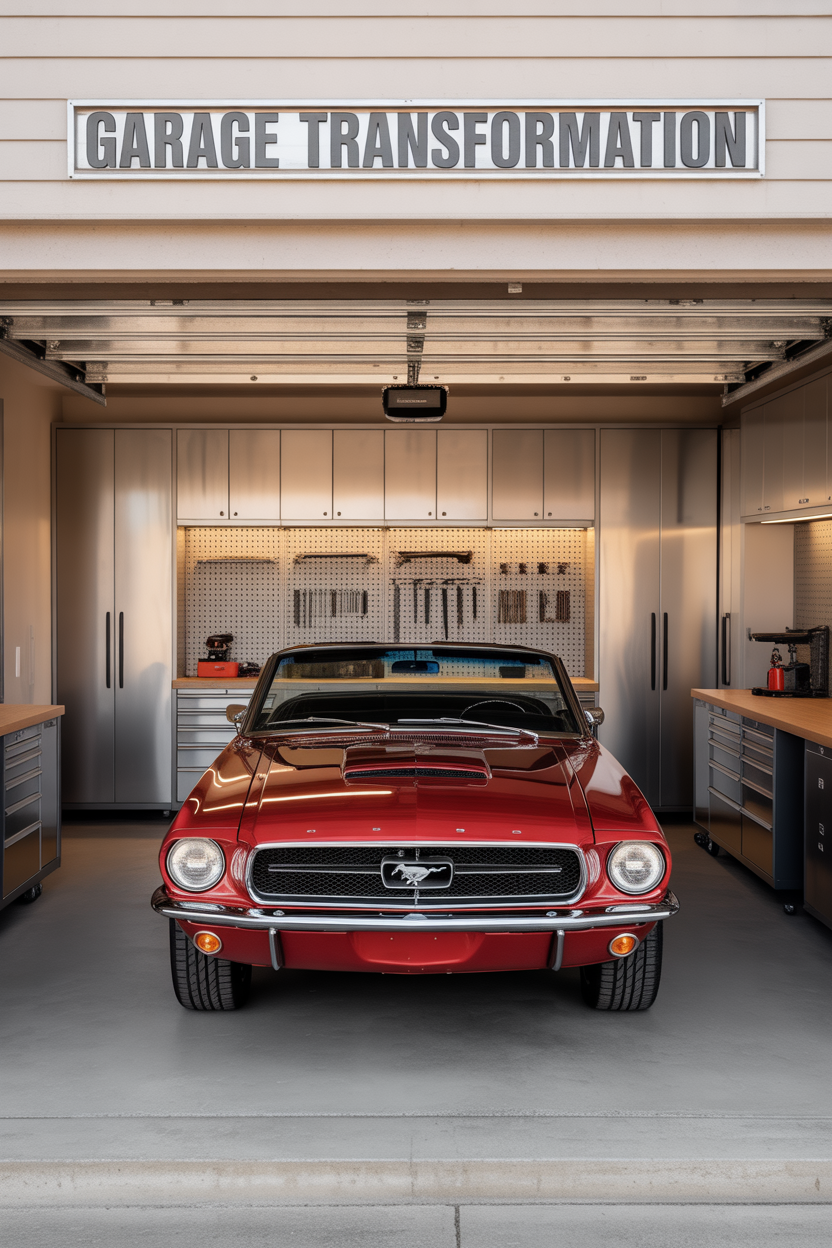
Upgrading your garage with the right cabinets is one of the most satisfying projects you can tackle at home. It’s more than just storage; it’s about reclaiming a massive part of your property and turning it into a functional, organized, and inspiring space.
Success comes down to smart planning. Begin by defining your goals, whether it’s for simple storage, a classic car sanctuary, or a full-blown workshop. Set a realistic budget that guides your choices without sacrificing essential quality.
Carefully consider the right materials for your climate and the types of items you’ll be storing. Choose between wall-mounted, freestanding, or mobile units based on your workflow and space requirements. Above all, measure everything twice to ensure a perfect fit.
Investing in quality cabinets pays off for years to come. They protect your tools, secure dangerous items, and bring a sense of order and calm to a space that is too often chaotic.
You have the power to convert that cluttered, underused area into one of the most useful rooms in your house. Take the first step today by making a plan. Your dream garage is waiting.


